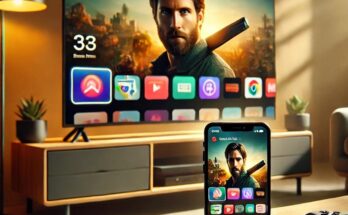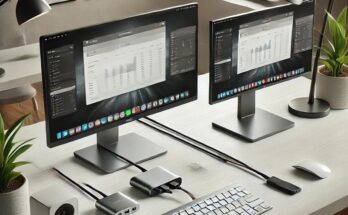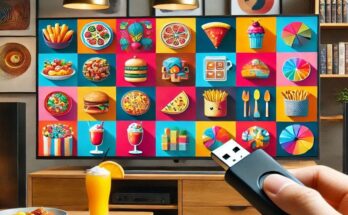LED display boards, with their vibrant displays of text, graphics, and animations, have become a captivating presence in our world. But these displays are more than just eye candy – they hold the potential for dynamic communication and creative expression. The magic lies in programming, the process of breathing life into your LED display by instructing it what to show and how to show it. This guide delves into the exciting world of LED display board programming, equipping you with the knowledge to create your own dazzling light shows.
Gearing Up for Programming: Essential Tools
Before embarking on your programming adventure, gather the necessary tools:
-
LED Display Board: This is the canvas for your creativity. Choose a pre-built display module or build your own using individual LEDs. Pre-built modules offer a simpler setup, while building your own provides more customization but requires soldering skills.
-
Microcontroller: This tiny computer brain controls the LED display. Popular options for beginners include Arduino boards like the Uno or Nano. These boards are user-friendly and have a vast array of learning resources available. The microcontroller will interpret your code and send signals to the LED display to light up the LEDs in the desired pattern.
-
Jumper Wires: These handy cables connect the microcontroller to the LED display, allowing information to flow. They come in various lengths and colors, making it easier to keep your project organized.
-
Power Supply: Ensure you have a power source that matches the voltage requirements of your LED display and microcontroller. A typical setup might involve a USB cable connected to your computer for the Arduino board and a separate power supply for the LED matrix itself, depending on its size and brightness.
-
Breadboard (Optional): This helpful prototyping tool allows for easy connection and testing of components without soldering. Breadboards are great for beginners or for temporary setups as you develop and test your code.
Additional Considerations:
-
Resistors: Depending on your LED display setup, you might need resistors to limit current and protect the LEDs. Consult your chosen matrix’s datasheet for specific recommendations. Resistors are crucial to prevent damage to your LEDs from excessive current.
-
Development Environment: Software like Arduino IDE provides a user-friendly interface for writing code that controls the LED display. These environments often offer features like syntax highlighting, code completion, and debugging tools to make your coding experience smoother.
Unveiling the Code: A Beginner’s Guide
Programming an LED display board might sound intimidating, but with the right approach, it’s surprisingly accessible. Here’s a breakdown of the essential steps:
-
Include Necessary Libraries: Libraries provide pre-written code functions for interacting with specific components like LED displays. Popular libraries like “LED Matrix Library” for Arduino offer functionalities for controlling individual LEDs, drawing lines and shapes, and even displaying text.
-
Define Pin Connections: Specify which pins on your microcontroller connect to the rows and columns of the LED matrix. This essentially creates a map for the microcontroller to understand how to address each LED on the display.
-
Create Functions for Drawing: Write functions that tell the microcontroller how to control individual LEDs or groups of LEDs. These functions might involve turning LEDs on or off, drawing lines, shapes, and displaying characters. Imagine these functions as building blocks that you can combine to create more complex animations and displays.
-
Animate Your Display: Utilize loops and conditional statements to create dynamic lighting effects and animations. Loops allow you to repeat patterns or animations continuously, while conditional statements enable you to change the display based on certain conditions. For example, you could use a loop to create a scrolling text effect or a conditional statement to turn on specific LEDs based on a sensor reading.
Learning Resources:
The beauty of the maker community lies in its wealth of shared knowledge. Numerous online resources and tutorials can guide you through specific libraries and coding examples. Popular platforms like YouTube and websites dedicated to Arduino programming offer a treasure trove of information to get you started. There are also online communities where you can connect with other makers and get help with your project.
Beyond the Basics: Exploring Advanced Techniques
Once you’ve mastered the fundamentals, the world of LED display board programming opens up a vast landscape of possibilities. Here are some exciting techniques to experiment with:
-
Advanced Animations & Effects: Go beyond simple lighting patterns. Utilize techniques like sine waves to create realistic fire simulations or explore animation libraries with pre-built effects for a head start. Imagine crafting mesmerizing flame animations or eye-catching text effects.
-
Text & Scrolling Features: Implement advanced text features like scrolling text, text animations (like fading in/out), and multi-color text for added visual impact. You can even explore displaying scrolling news headlines or social media feeds on your LED display board.
-
Interactive Displays: Incorporate Sensors to Create Responsive Light Shows
Take your LED display board programming to the next level by integrating sensors! Sensors allow your display to react to its environment, transforming it from a static display to an interactive experience. Here’s how to unlock the potential of interactive displays:
-
Light Sensors: Imagine an LED display board that automatically adjusts its brightness based on ambient light. By incorporating a light sensor, your display can be bright and visible in daylight but dim down at night to prevent glare. This not only enhances user experience but also saves energy.
-
Temperature Sensors: Take your creativity a step further with temperature-responsive displays. The LED matrix could display different colors or animations depending on the surrounding temperature. Imagine a display that shows cool blue tones when the temperature drops or fiery orange patterns when it heats up, creating a visually engaging experience that reflects the environment.
-
Motion Sensors: Add a touch of interactivity with motion sensors! Your LED display could activate and display a welcome message when someone approaches, or it could change animations depending on hand gestures. Imagine creating a light show triggered by movement, turning your display board into a captivating interactive art piece.
Interfacing Sensors with Your Code:
Connecting sensors to your LED display board programming involves adding a few extra steps to your code:
-
Include Sensor Library: Similar to LED matrix libraries, libraries often exist for specific sensors. Include the necessary library in your code to enable communication with the sensor.
-
Sensor Initialization: Write code to initialize the sensor and configure its settings. This might involve specifying the data pin (where the sensor sends its readings) and any calibration steps.
-
Read Sensor Data: Incorporate code to read data from the sensor within your main program loop. This data could be a light level reading, a temperature measurement, or a motion detection signal.
-
Respond to Sensor Data: The heart of interactive programming lies in how you use the sensor data. Use conditional statements to trigger specific actions based on the sensor readings. For example, if the light sensor detects low light, your code could adjust the display brightness.
Taking it Further:
These are just a few examples to spark your creativity. Here are some additional possibilities:
-
Sound Sensors: Integrate a microphone or sound sensor to create light shows that react to music or ambient noise. Imagine visualizing sound waves on your LED display board or creating a visual dance party triggered by music.
-
Combination Sensors: Combine multiple sensors for even more complex interactions. Imagine an LED display that adjusts brightness based on light levels and displays a welcome message with motion detection.
By incorporating sensors and expanding your programming knowledge, you can transform your LED display board from a simple display into a captivating and interactive experience. Remember, the possibilities are limited only by your imagination and coding skills!
-




